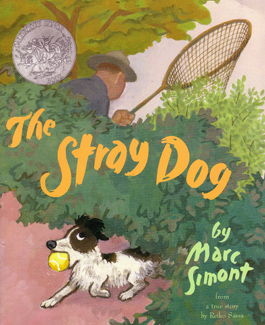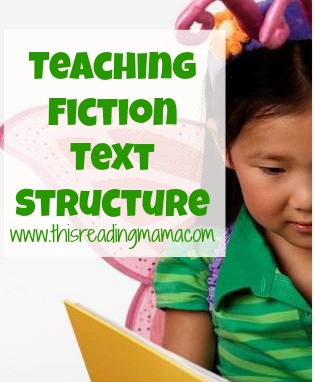{photo credit}
If you’re new to This Reading Mama, welcome! I’m in the middle of a mini-series on teaching fiction text structure. You can click on the image above to read the introduction.Today, I’m going to explore how to READ AND IDENTIFY the Text Structure
Before Reading:
1. We briefly talked about Scooby Doo (she was very familiar with this show/movie) and how there is always a mystery to solve; a problem to figure out. We, as the viewer, are introduced to the problem early on in the show and the characters spend much of the show trying to figure out a solution. There’s usually a part where it gets scary and you think the bad guys are going to win. But in the end, they always solve the problem and the bad guy loses.
A clip of a favorite Disney show or another current movie would work just as well. The older shows such as Lassie, Saved by the Bell, or Full House would also work, as they share the same narrative fiction text structure. Many of these shows can be found on youtube.
2. We looked at Scholastic’s plot diagram & compared it with my Fiction Text Structure and we briefly talked about each part and how it fit into Scooby Doo:
- Introduction-where the author sets the stage: who is going to be in the story and when and where the story takes place & introduction of the problem– usually the main character faces some type of problem
- Rise in Action– the main character tries to solve the problem, but usually faces other problems along the way
- Climax-the character is confronted with the problem head-on
- Fall in Action & Resolution-problem is solved and tension is gone
This is called a text structure: how the author chooses to organize the story or information.
During Reading:
 We shared a reading of The Stray Dog by Marc Simont. I started with an easier text so that we could focus more upon comprehension. As we read, I commented on how the author set up the storyline similar to our plot diagram. I pointed out each part to her; but we also discussed that not all stories include all these parts. This story, for example, does not have much meat in the Complication or Crisis/Dilemna department.
We shared a reading of The Stray Dog by Marc Simont. I started with an easier text so that we could focus more upon comprehension. As we read, I commented on how the author set up the storyline similar to our plot diagram. I pointed out each part to her; but we also discussed that not all stories include all these parts. This story, for example, does not have much meat in the Complication or Crisis/Dilemna department.
After Reading/Review:
For homework, I had her re-read The Stray Dog and label the parts, Initial Set-Up, Big Event, Complications, Crisis/Dilemna, Climax, and Resolution, with sticky notes. She had to be ready to defend her labeling to me the next time she came back (1 week in between tutoring sessions).
This lesson could be repeated multiple times with different books and/or videos until the child shows signs of readiness for the next step.
*This post may contain affiliate links. For more information, you can read my disclosure policy.
Stay connected to This Reading Mama so you don’t miss a thing:
- Subscribe by email {get really cool FREEBIES when you do!}
- Google+
~Becky

Love the book: The Stray Dog….Please notice that this story book is great for learning about and practicing inferring. AND the complications/crisis part is very much there….for the dog, but it must be inferred by the reader.